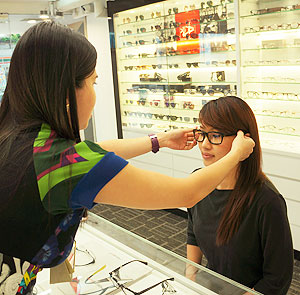
Eye Fatigue or Computer Eye Strain?
Can you distinguish Eye Fatigue or Computer Eye Strain? A real health problem that will adversely affects work performance.

If you’re experiencing two or more of these symptoms daily, you can be pretty sure you’re struggling with computer eye strain:-
- Blurred vision is the most common symptom. You may experience blurred vision or a delay in focusing when you shift your gaze from the computer screen to distant objects.
- Dry eyes can exhibit a variety of symptoms. You may feel like there’s something in your eye that you can’t remove, or your eyes may seem to burn, sting or be inflamed.
- Eye strain is typically described as vague eye discomfort. You may feel the need to squint or you may notice you’re constantly frowning while looking at the monitor (for reasons other than what’s on the screen).
- Glare sensitivity increases if your monitor is either too bright or too dark. Your eyes may feel tired from constantly trying to focus and refocus on the screen.
- Headaches — not just those in the eye area — could be caused by computer eye strain.
- Neck and shoulder pain, while not directly related to vision, can add to computer eyestrain. You may find that you’re leaning away from a monitor that’s too close or twisting your upper body due to a non-ergonomic workstation.
If you experience all the above, these five things that you can do now.
- Blink often. Blinking bathes your eyes in tears, and tears are naturally therapeutic for the eyes. Put a note on your monitor to remind you to blink.
- Look away. 20/20/20 Every 20 minutes take 20 seconds and look away from the monitor. Focus on an object at least 20 feet away to give your eyes a rest.
- Reduce glare and reflections. Lower bright overhead lighting and position a desk lamp so it shines on the desk, away from the screen and your eyes. If you can move your desk, arrange it so windows are off to the side. Reduce sunlight with window blinds.
- Adjust your monitor. 20/20/20… It should be at least 20 inches from your eyes, with the center about 4 to 6 inches below your eyes. Adjust brightness so it is the same as the brightness in your office. Adjust contrast so it is as high as is comfortable for you. Select a monitor with high resolution, one that does not flicker and that has sharp contrast between the background and the image. Finally, consider the type on your screen. Is it too small? If so, zoom in or enlarge type so it is easier to read.
- Consider computer glasses. A pair of glasses with a special prescription created just for helping your eyes read the screen might be necessary. We can prescribe the best glasses for your individual needs and can recommend solutions such as adjustments to your office environment, special eyewear, eye drops or a combination approach. Also, a thorough eye exam may reveal that your computer vision problems are related to a different condition that requires treatment.

No comments yet.